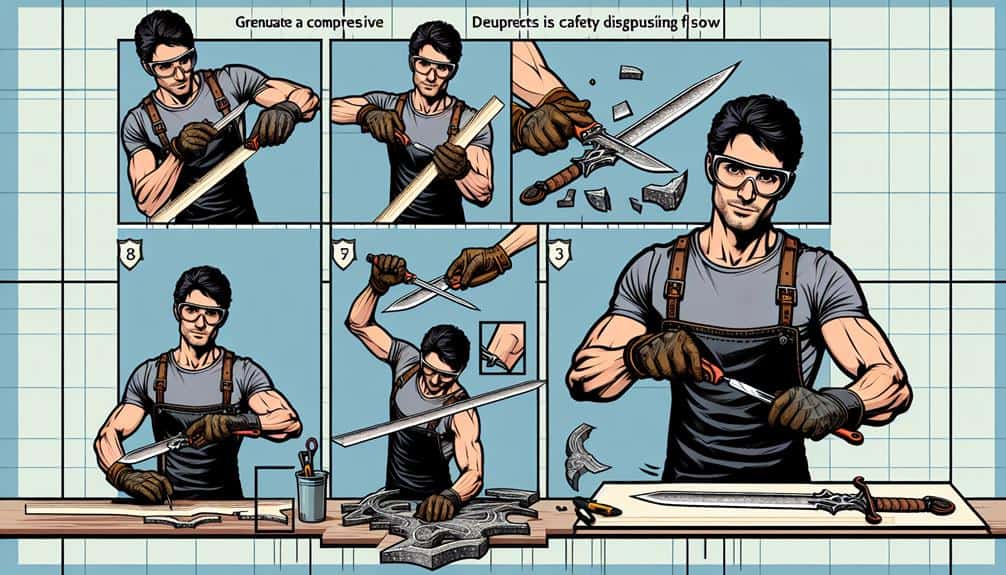Have you ever considered the impact of incorporating unique quirks and flaws into your role-playing character? By infusing your character with distinctive traits, you can add depth and complexity to their persona, making them more engaging and memorable to both you and your fellow players.
But that's just the beginning; there are several other key strategies that can elevate your character creation process and take your role-playing experience to the next level.
Key Takeaways
- Immerse in past experiences for character depth and authenticity.
- Select archetype to shape identity and role effectively.
- Infuse unique traits and flaws for a rich narrative.
- Drive character actions with inner desires and motivations.
Developing a Compelling Backstory
When crafting a compelling backstory for your role-playing character, immerse yourself in their past experiences to create depth and authenticity. Creating depth is essential to making your character feel real and relatable, so consider their upbringing, pivotal moments, and how these events shaped their beliefs and motivations.
Establishing connections between your character and the world they inhabit is critical for fostering a sense of immersion and investment in their journey. Think about their relationships with other characters, organizations, or even the environment itself.
Dive into the details of your character's past to uncover moments that define who they are. Were they orphaned at a young age, or perhaps they've a mentor who taught them valuable skills? These experiences not only add layers to your character but also present opportunities for growth and development throughout your role-playing adventures.
Choosing the Right Character Archetype
To create a dynamic and engaging role-playing character, carefully selecting the right character archetype is crucial for shaping their identity and role within the game world. Exploring personality types allows you to delve into various traits and behaviors that define your character.
Are they a charismatic bard inspiring others with their music, or perhaps a stoic paladin driven by a sense of justice? Each archetype offers a unique lens through which your character views the world and interacts with others.
Building relationships within the game hinges on your character archetype as well. A cunning rogue might form alliances based on mutual benefit, while a noble knight values honor and loyalty above all else. Understanding how your chosen archetype influences these connections can add depth and authenticity to your role-playing experience.
Whether forging alliances or facing adversaries, your character archetype serves as a foundation for their journey in the game world.
Incorporating Unique Traits and Flaws
As your character archetype forms the core of their identity, infusing them with unique traits and flaws adds depth and complexity to their persona in the game world. Exploring quirks and embracing imperfections can breathe life into your character, making them more relatable and engaging for both you and your fellow players.
Here are four tips to help you incorporate unique traits and flaws into your role-playing character:
- Mix Quirks with Flaws: Consider blending endearing quirks with significant flaws to create a well-rounded character that feels authentic and human.
- Draw Inspiration from Real Life: Look to the people around you or characters from books, movies, and TV shows for inspiration on unique traits and flaws.
- Create Contrast: Introduce traits that seem contradictory at first but ultimately enrich your character's narrative and interactions.
- Use Flaws as Growth Opportunities: Leverage your character's flaws as avenues for growth and development throughout their journey in the game world.
Focusing on Character Goals and Motivations
Immersed in the rich tapestry of your character's essence lies the pivotal foundation of their journey: their goals and motivations propel them through the intricate web of the game world, shaping their actions and interactions with a compelling sense of purpose.
Goal setting isn't just a mere checklist but a compass guiding your character's every move. It's vital to explore deep into your character's psyche to unearth their innermost desires and fears, for therein lie the seeds of motivation.
Understanding what truly drives your character, whether it be a thirst for power, a quest for redemption, or a longing for acceptance, adds layers of complexity to their persona. Inner conflicts, the clash between what they want and what they must do, inject realism into your character, making them relatable and engaging.
Harness this drive to infuse authenticity into their decisions, making their journey a riveting tale of growth and transformation.
Enhancing Character Interactions and Dynamics
Plunge into the intricate dance of personalities and relationships, shaping your character's journey through the vivid tapestry of interactions within the game world.
- Explore Relationship Dynamics: Investigate the nuances of how your character interacts with others, from allies to foes, to create depth and authenticity in your role-playing experience.
- Navigate Conflict Resolution: Embrace challenges as opportunities for character growth, using conflicts to propel your character forward and shape their narrative arc.
- Foster Character Growth: Allow your character to evolve through their interactions with others, learning from successes and failures to become a more well-rounded and compelling persona.
- Embrace Character Dynamics: Pay attention to the ever-changing dynamics between characters, adapting your responses and decisions to reflect the evolving relationships within the game world.
Frequently Asked Questions
How Can I Ensure My Character Stands Out in a Group of Other Role-Playing Characters?
To make your character stand out in a group, focus on character development. Infuse unique traits that spark curiosity. Engage in group dynamics, leverage character interactions to showcase depth. Embrace originality and let your character's essence shine through interactions.
What Are Some Common Pitfalls to Avoid When Creating a Role-Playing Character?
When creating a character for role-playing, steer clear of the pitfall of shallow backstories. Dive deep into character development to avoid blending into the crowd. Uniqueness lies in the layers you add.
How Can I Handle Conflicts Between My Character's Goals and Motivations During Gameplay?
Navigate character development by embracing internal conflict for player growth. When faced with moral dilemmas aligning with your character's goals, choose decisions that challenge and shape your persona, allowing for deeper, more engaging role-play experiences.
What Strategies Can I Use to Maintain Consistency in My Character's Personality and Actions Throughout the Game?
Maintaining consistency in your character's personality and actions during gameplay enhances player engagement. This boosts character development and enriches role-playing dynamics. By staying true to your character's core traits, you create a more immersive and authentic role-playing experience.
How Can I Create a Character That Challenges Me as a Player and Pushes Me Out of My Comfort Zone?
To create a character that challenges you as a player and pushes you out of your comfort zone, investigate deep into character depth. Explore role-playing dynamics that stretch your abilities, forcing growth and immersion in new experiences.



